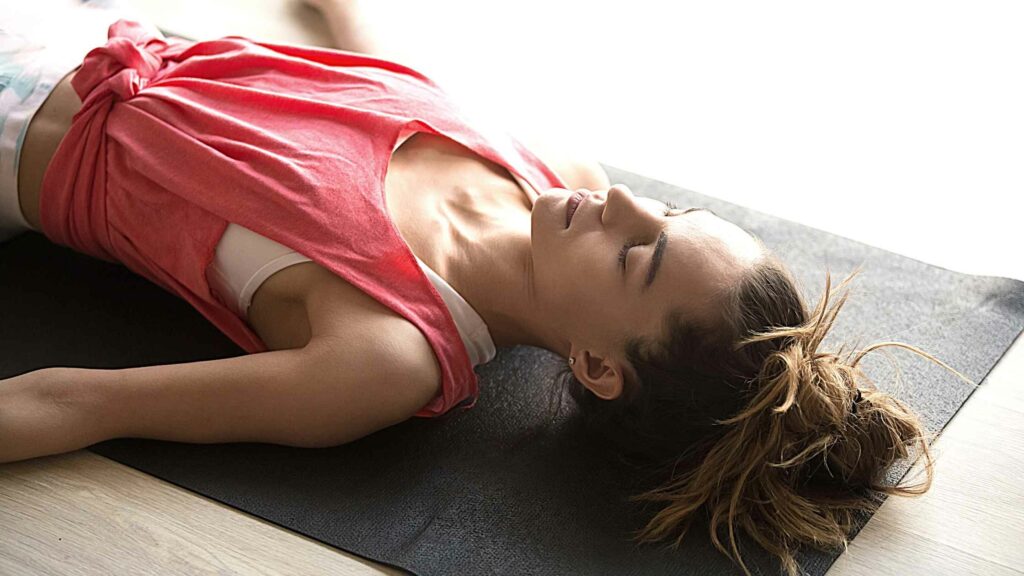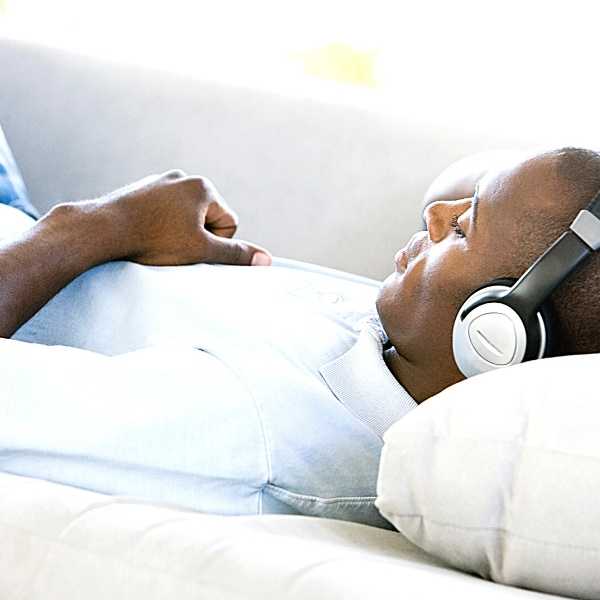HUSO RELAX Program vs. Yoga Nidra

The HUSO RELAX Program vs. Yoga Nidra - A Side-by-side Comparison
Many remedies exist on how to relax the body and mind. After a long day, doing something to completely unwind is crucial. Engaging in activities that help you to relax also help you to sleep better, feel healthier overall, and help you to feel refreshed and ready for the next day. Let's find out more about the HUSO RELAX program vs yoga nidra and how they compare.

Yoga Nidra
If you aren’t familiar with yoga nidra, it’s also known as yogic sleep. It’s a way of deeply relaxing the body by focusing on different body parts and consciously relaxing them. It’s an ancient practice and is known for helping the body release tension on a deep level.
You begin by lying down in a comfortable position - in bed or on a yoga mat. Sitting upright is optional for yoga nidra, but it’s more common to lie down. If you tend to get cold, you can use a blanket to cover yourself.
If you’re new to the practice, it's good to find a teacher or video to lead you through the meditation. Finding a yoga nidra track online is absolutely fine, but if you’re really looking to “disconnect,” online video sources can make that more difficult. This is especially true if you’re wanting to reduce EMF exposure through wireless devices. You can choose to listen with headphones or not.
Beginning the practice
At the beginning of the practice, you spend few moments to set an intention for what you might like to do with your yoga nidra session. This is called a “sankalpa.” Your teacher’s voice will softly guide you into relaxing your entire body. Yoga nidra usually starts with relaxing the head, and then slowly moves down to your ears, your eyebrows, cheeks, jaw, nose, and so on, until you have brought gentle attention to every part of your body. Part of the experience is bearing witness to the different sensations you might feel. It is an experience of letting go. You become aware of all major parts of your body, noticing any sensations, and letting them leave your consciousness. A typical session lasts anywhere from 20-40 minutes.
RELAX on HUSO
The RELAX program on HUSO is a different kind of approach to relaxation all together. As with yoga nidra, you start out in a similar way: you can lie in bed or on a yoga mat and you can cover yourself with a blanket to keep from getting cold. You can also remain seated, as with yoga nidra.
Each HUSO unit comes with wrist and ankle bands. These work to introduce beneficial healing and balancing frequencies to the body by transmitting specific oscillating vibrations to major meridian points. High quality headphones are a must. HUSO units also use wired technology, thereby eliminating the need to be connected online. There's no need to look at a screen (other than briefly setting up the program you want to listen to). Being "wired" has the added benefit of reducing exposure to potentially harmful electromagnetic frequencies, or EMFs, that are an inescapable byproduct of online activity.
When you push the button to begin the program, you can just sit back and listen. The idea is to let the HUSO do its work. There are no words in the RELAX program, just different frequencies with comforting human vocal toning sounds. The RELAX program lasts 30 minutes, and includes 10 minutes of low-range frequencies, then 10 minutes of mid-range tones, and the final 10 minutes comprise more low frequency tones to allow for release of stress or anxiousness.

The Relaxation Effects of HUSO and Yoga Nidra
Both yoga nidra and the RELAX program on HUSO can deliver profound relaxation effects. They are different modalities that can achieve the same thing: an overall experience of profound calmness.
Yoga Nidra is great for relaxation, as is the HUSO RELAX program. Listening to HUSO has the added benefit of the wrist and ankle bands working on the meridians of the body to help induce a deep state of relaxation.
Similarities
- With yoga nidra or the RELAX program, you can either be sitting up or lying down (though lying down is the usual position with yoga nidra)
- Both deeply relax the body and mind
- Both use auditory input (though once you really learn yoga nidra, you can forego the voice guiding you), ideally with high quality headphones
Differences
- Yoga nidra follows someone’s voice as a guided meditation to help you relax, at least initially
- HUSO uses human sound frequencies and tones to help you relax
- Yoga nidra places your gentle attention on all the different parts of the body to notice sensations and release any tension
- HUSO works by using human sound auditory input and specific oscillating frequencies delivered to acupuncture meridian points to relax the body
- You set an intention (sankalpa) with yoga nidra as part of the practice
- With HUSO, you don’t have to set an intention, but doing so can help you focus your intent to relax
- There are no words in any of HUSO’s programs; you just sit back and listen to the healing frequencies
- If you need to listen to yoga nidra online, you invariably stay connected to the virtual world, and remain exposed to subsequent EMFs
- HUSO uses wired technology to help reduce the incidence of exposure to EMFs; you don’t have to be near a screen or connect to the internet
Conclusion
While they are inherently different approaches to relaxation, the HUSO RELAX program vs yoga nidra both help you to release tension in your body and mind. They can allow you to become more connected to yourself and feel a greater sense of well being. HUSO has an added benefit of working on acupuncture meridians while you listen.

